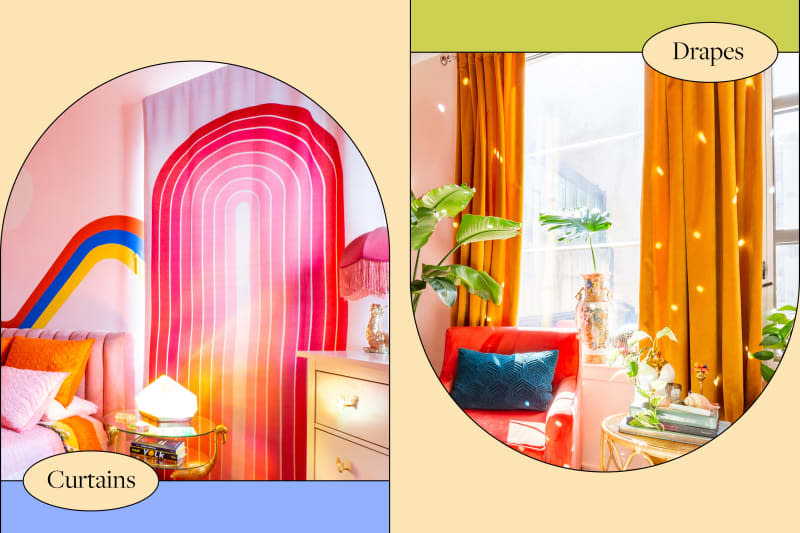Should You Use Curtains or Drapes? This Is What the Experts Say

Drapes and curtains — they’re technically the same thing, right? Actually, nope. These are two similar yet different window treatments, and it can come down to the fabric choice to delineate between the two of them. But which ones are right for your windows and your needs? What will look best in your home? An interior designer sheds some light on this surprisingly tricky topic.
What’s the Difference Between Curtains and Drapes?
First, Jenny Williamson, chief creative officer of West Rose Design, details the similarities between curtains and drapes. She says, “Drapes and curtains are both window treatments that are generally positioned above a window with a rod and hang in front of a window. They frame the window, balance the light filtration, and offer privacy.” She also notes that both drapes and curtains can transform the ambiance of a space, and they are often sold in pairs or as singles depending on the window needing coverage.
While they basically sound like the same thing, Williamson says that the difference between drapes and curtains is the fabric.
“Typically, drapes are made of a heavier lined fabric to block all outside light, and curtains are a lighter fabric ranging from completely sheer to privacy,” she says. “Drapes are often custom-made versus ready-made as well.”
Ideally, Williamson says that drapes are best for bedrooms where blocking out the light for optimal sleeping is needed. Drapes also lend themselves to a more formal atmosphere and work well in sophisticated living rooms or dining rooms. They typically cover larger windows and hang from close to the ceiling (depending on ceiling height) above the window to the floor.
She goes on to say that curtains are incredibly versatile, as they come in so many different varieties and are best-suited to any room and visual interest. Curtains can be used on most window sizes — for example, café curtains can be used on smaller windows.
Curtains vs. Drapes
If budget is top of mind for you as you refresh a room, you’ll be pleased to know that curtains are often more affordable than custom drapes, and they offer a wide range of coverage to boot.
But there is a con, as Williamson shares: Curtains can appear “cheap” when compared to a custom-made drape.
While drapes can certainly add visual interest to a room (put that in the “pros” column), Williamson says they can be quite expensive. And they’re often difficult to install, as the fabric is heavy and requires a rod mounted “incredibly well to keep up,” Williamson adds.
Styling Tips
Because both curtains and drapes have been around for a while (in fact, these window treatments were even used by the ancient Egyptians), it can be key to keep the look fresh for modern times. For instance, Williamson says that curtains in lightweight materials, such as linen and cotton, make more sense for laid-back spaces, as they evoke a lighter and airier feel.
But perhaps you’re aiming for a formal aesthetic in the space. In this case, Williamson says that drapes in subtle patterns or solid colors should do the trick, as they will instantly make the room look more luxurious. “Because drapes are often custom-made, they create a more unique and elevated look,” she says.
Here’s a general rule of thumb: Drapes are more traditional. Curtains in the myriad of materials offered provide more “modern and fresh vibes,” Williamson says.
No matter if you choose curtains or drapes for your space, Williamson stresses the need for the right hardware. She says, “A French return rod returns the curtain all the way to the wall for a sleeker look. If you opt for a regular rod, keep the finial on the simple side for a more modern and less busy approach.”

